Nestled in the southwestern corner of India, Kerala is renowned for its lush landscapes, serene backwaters, and vibrant culture. But beyond its famous beaches and hill stations, Kerala is also home to a network of captivating wetlands that harbor rich biodiversity and scenic beauty. In this blog, we’ll embark on a virtual journey to discover some of Kerala’s most enchanting wetlands, offering valuable insights and photography tips along the way.
- Vembanad Wetland: Spanning over 2000 square kilometers, Vembanad Wetland is the largest wetland ecosystem in Kerala and a Ramsar designated site of international importance. This expansive network of lakes, rivers, and canals is renowned for its picturesque backwaters, verdant rice paddies, and traditional houseboats. Photographers can capture stunning sunrise and sunset scenes, with the golden hues reflecting off the tranquil waters, or focus on the vibrant birdlife including herons, egrets, and kingfishers that call this wetland home.

- Thattekad Bird Sanctuary: Located in the foothills of the Western Ghats, Thattekad Bird Sanctuary is a haven for avian enthusiasts and nature photographers. Spread across 25 square kilometers of dense evergreen forest, this sanctuary is home to over 300 species of birds, including endemic and migratory species. Photographers can capture intimate portraits of colorful songbirds amidst the lush foliage or wait patiently at the edge of the Periyar River for a chance to glimpse the elusive Malabar grey hornbill or the vibrant Malabar trogon.

- Kuttanad Wetlands: Kuttanad is often referred to as the “Rice Bowl of Kerala” due to its vast paddy fields interspersed with backwaters and canals. This unique wetland ecosystem is located below sea level and is renowned for its traditional farming practices and scenic beauty.
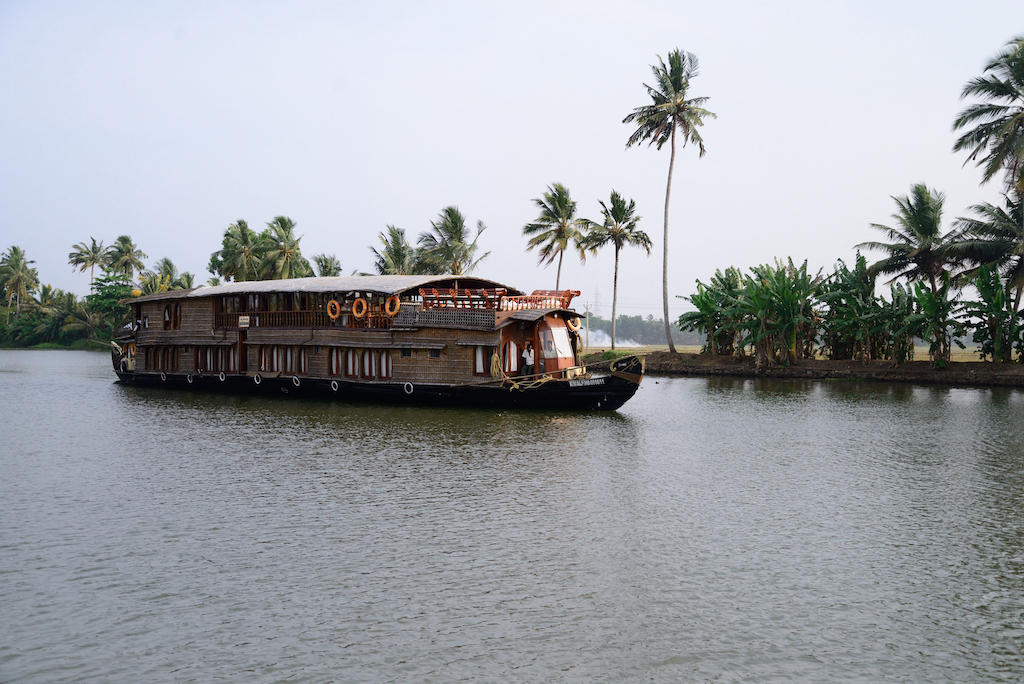
- Ashtamudi Lake: Dubbed the “Gateway to the Backwaters,” Ashtamudi Lake is a scenic estuarine lake located in the Kollam district of Kerala. This picturesque waterbody is characterized by its tranquil backwaters, swaying coconut palms, and traditional Chinese fishing nets dotting the shoreline. Photographers can capture reflections of traditional houseboats gliding across the glassy surface of the lake or frame shots of fishermen casting their nets at dawn, bathed in the soft morning light.
- Periyar Wildlife Sanctuary: While primarily known for its dense forests and diverse wildlife, Periyar Wildlife Sanctuary in Thekkady also features wetland habitats such as Periyar Lake and associated marshes. Visitors can enjoy boat safaris on the lake, offering opportunities to spot elephants, sambar deer, and a variety of bird species.
- Kadalundi Bird Sanctuary: Situated at the confluence of the Kadalundi River and the Arabian Sea, Kadalundi Bird Sanctuary is a haven for migratory birds and a paradise for birdwatchers and photographers alike. Spread across a cluster of islands and mangrove forests, this sanctuary attracts thousands of winged visitors during the winter months, including terns, sandpipers, and plovers. Photographers can capture dynamic shots of birds in flight against the backdrop of the serene mangrove forests or wait patiently for a chance to photograph the elegant Brahminy kite soaring overhead.
- Mangalavanam Bird Sanctuary: Located in the heart of Kochi city, Mangalavanam Bird Sanctuary is a haven for birdwatchers and nature enthusiasts. This small but ecologically significant wetland is home to various resident and migratory bird species, including herons, egrets, kingfishers, and waterfowl.
- Kumarakom Bird Sanctuary: Nestled on the banks of Vembanad Lake in Kottayam district, Kumarakom Bird Sanctuary is another popular destination for birdwatching enthusiasts. The sanctuary is home to numerous resident and migratory bird species, including herons, egrets, cormorants, and migratory ducks.
- Kadamakudy Wetlands: Kadamakudy is a picturesque island located in Ernakulam district, characterized by its serene backwaters, mangrove forests, and coconut groves. The wetlands surrounding Kadamakudy Island support a rich diversity of aquatic life, including fish, crabs, and mollusks. The mangrove forests act as natural buffers against coastal erosion and provide habitat for numerous bird species, making Kadamakudy an ideal destination for nature lovers and photographers.
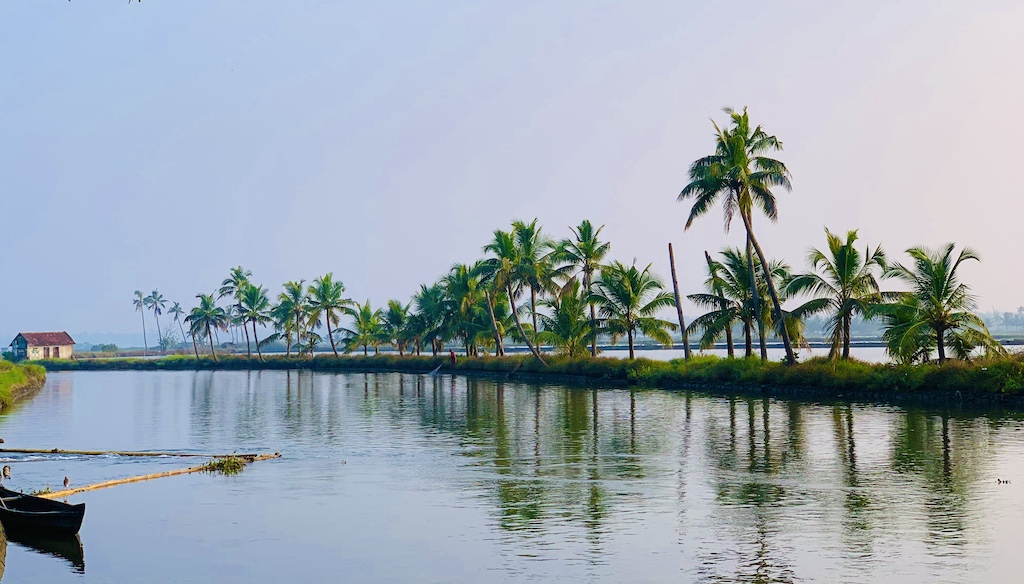


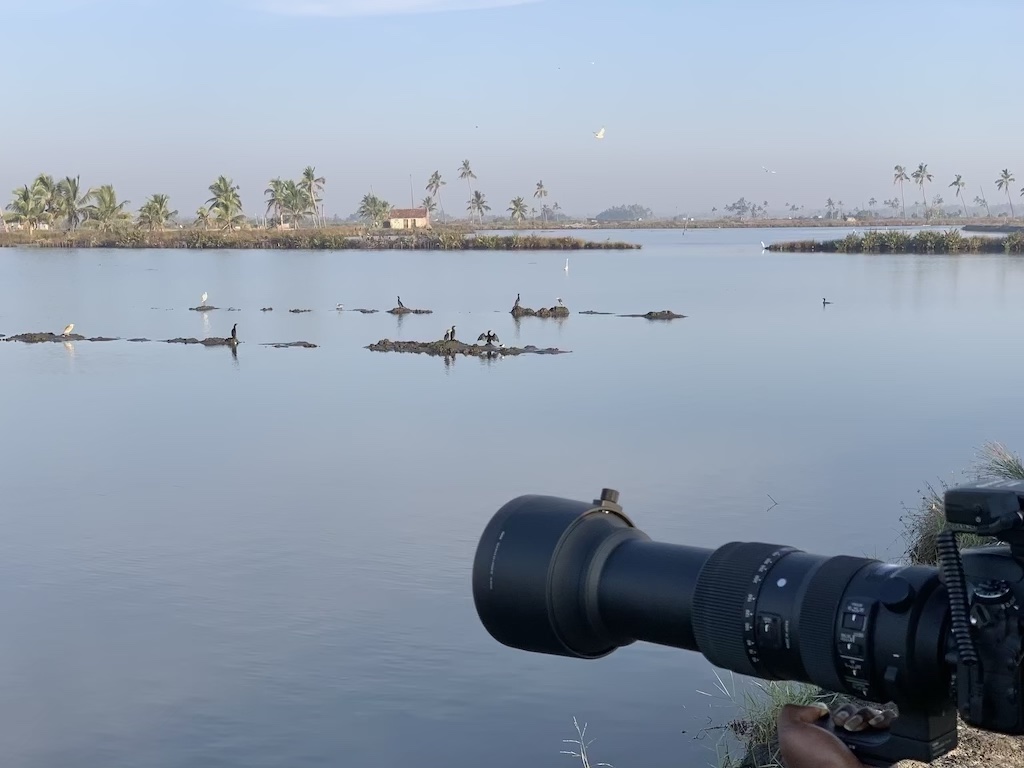
- Thrissur Pullu Wetlands: Thrissur Pullu, also known as Thrissur Kole Wetlands, is a vast expanse of low-lying paddy fields and marshes located in Thrissur district. These wetlands play a crucial role in the region’s agricultural economy, supporting traditional rice cultivation practices. During the monsoon season, Thrissur Pullu transforms into a mosaic of flooded fields, attracting migratory birds such as ducks, storks, and herons. The wetlands also serve as important breeding grounds for fish and other aquatic species, contributing to the biodiversity of the region.
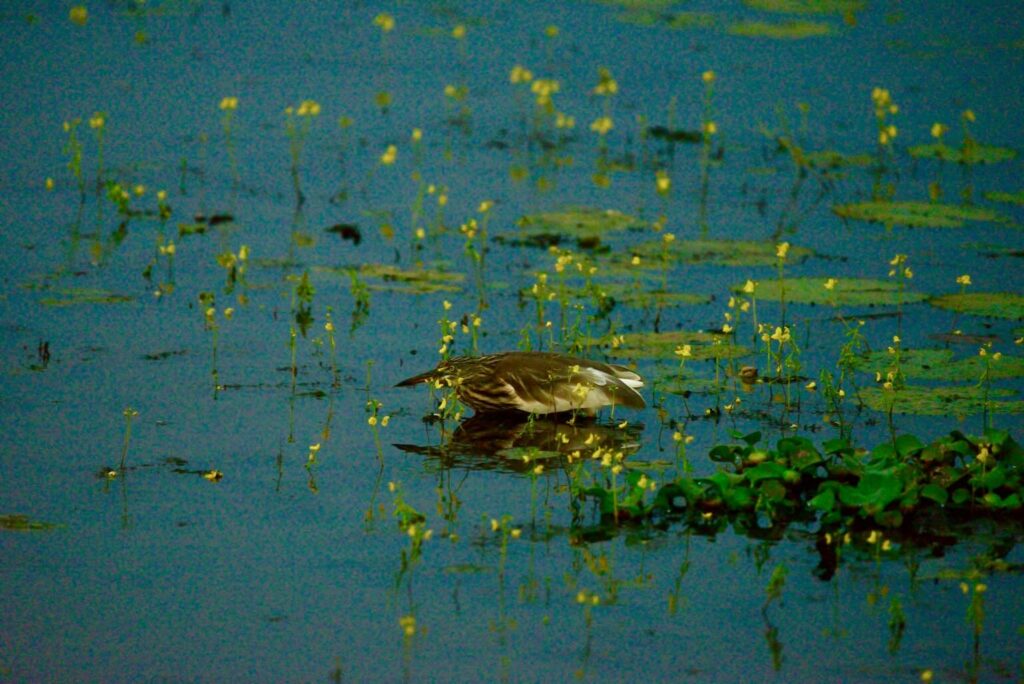
Kerala’s wetlands are not only havens for biodiversity but also provide endless opportunities for photographers to capture the beauty and tranquility of these unique ecosystems. Whether you’re drawn to the serene backwaters of Vembanad, the avian diversity of Thattekad, the scenic vistas of Ashtamudi, or the coastal charm of Kadalundi, Kerala’s wetlands offer a wealth of subjects waiting to be immortalized through the lens of your camera.
From the mangrove forests of the Sundarbans to the salt marshes of the Rann of Kutch, Indian wetlands are a treasure trove of natural wonders waiting to be explored and photographed. By venturing into these diverse ecosystems with a keen eye and a sense of wonder, photographers can capture the beauty and biodiversity of India’s wetlands while raising awareness about the importance of conserving these vital habitats for future generations.
READ MORE…
– Tips for Wetland Photographer
– The Rich Diversity of Indian Wetlands
Get some information about the images you took using Camera:
MEET THE EXIF VIEWER BY FLUNTRO FOR PHOTOGRAPHERS
Featured App on U.S and Canada AppStore. Understanding the details behind a photograph is crucial for refining your photography skills.
EXIF Viewer by Fluntro app can provide comprehensive metadata, including camera settings, exposure details, and geolocation data, allowing you to analyze successful shots and identify areas for improvement. By dissecting the EXIF data, iPhone photography users can gain valuable insights into their shooting techniques, enabling them to make informed adjustments and elevate their photography prowess.
Appstore Link: – https://apps.apple.com/us/app/exif-viewer-by-fluntro/id944118456
- View EXIF Data: Quickly access the EXIF tags of your Photos and Videos, providing essential information about camera settings, location data, and more.
- Remove EXIF Data: Safeguard your privacy by easily removing EXIF metadata before sharing Photos and Videos on social media or other platforms.
- Edit EXIF Data: Modify incorrect details like date and time, ensuring accurate image information.
- Geolocation Details: Instantly view, remove and edit Geotagging – GPS location, GPS coordinates, altitude, and direction with advanced features.
- iOS and iCloud Integration: Access EXIF metadata across your iOS devices and iCloud seamlessly.
- Photo EXIF Tags: Discover essential EXIF data, including ISO, Shutter Speed, Focal Length, Camera Model, lens model, Aperture, Photo Keywords and more.
- Image Details: Access information such as image DPI, height, and width on your iPhone and iPad.
- High-Resolution Image Viewing: Seamlessly zoom in on high-resolution photos of up to 80 MB with exceptional clarity.
- Date Format Options: Customize date formats to your liking for a convenient viewing experience.
- Privacy Control: Effortlessly conceal photos without EXIF metadata for enhanced privacy.
- EXIF Viewer Photos Extension: Access EXIF data directly from the native Photos app or other third-party apps.
- Flexible Sharing: Easily share images with options to include or exclude EXIF metadata.
- Copy to Clipboard: Copy EXIF data to the clipboard for convenient sharing across multiple applications.
- Metadata Retention: Learn how the app retains EXIF metadata while sending photos through Mail, AirDrop, and other sharing methods.
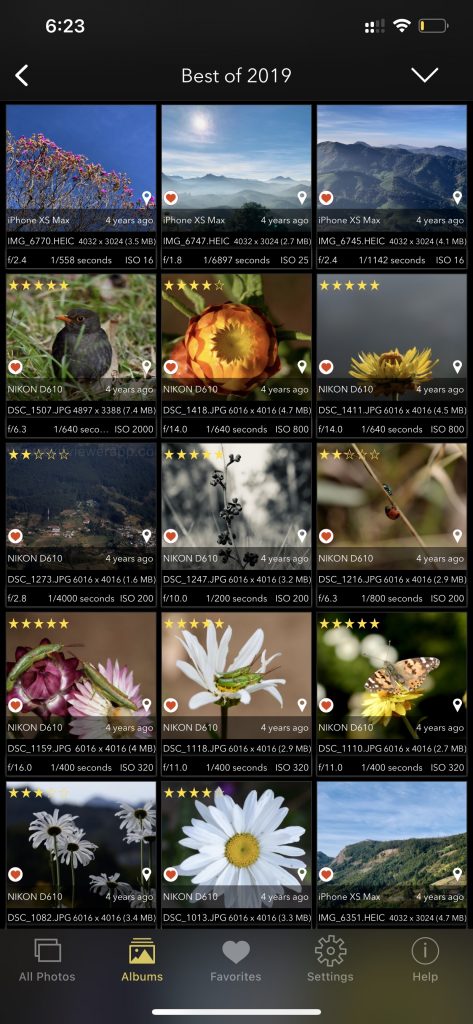
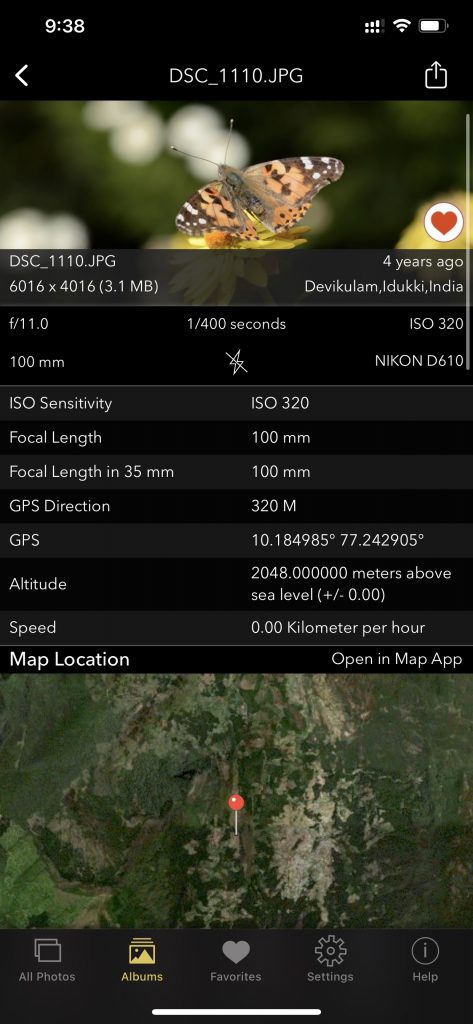

Screenshot of EXIF Viewer App images showing 30+ exif metadata

To Download App:
- Visit the App Store on your iPhone or iPad.
- Search for “EXIF viewer by Fluntro“.
- Download and install the app. EXIF Viewer app allows you to View, Remove and Edit image and video metadata.
Checkout the preview video of Exif Viewer by Fluntro: